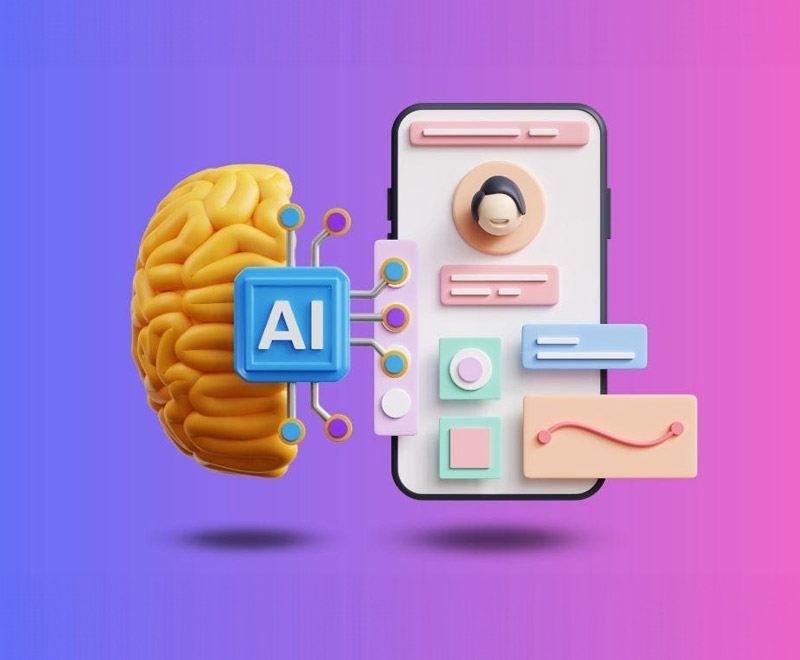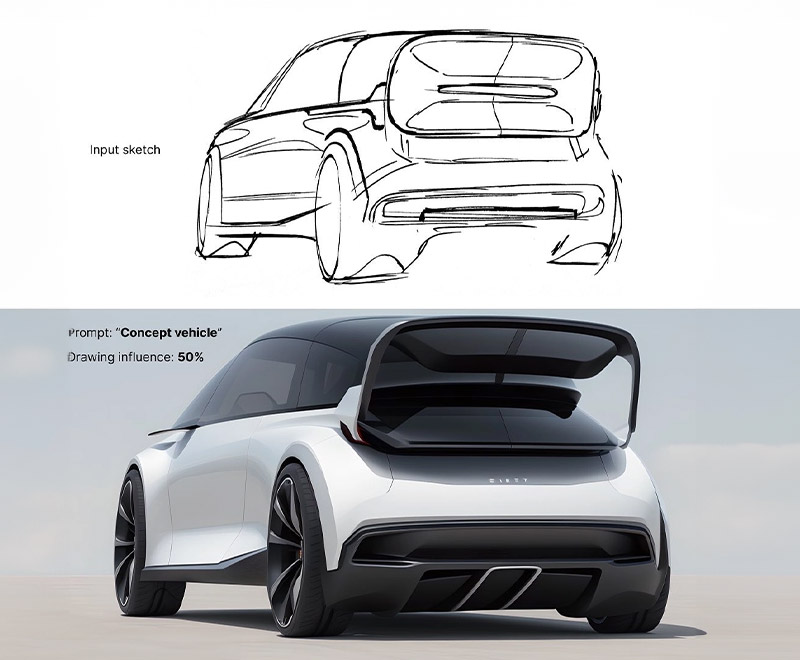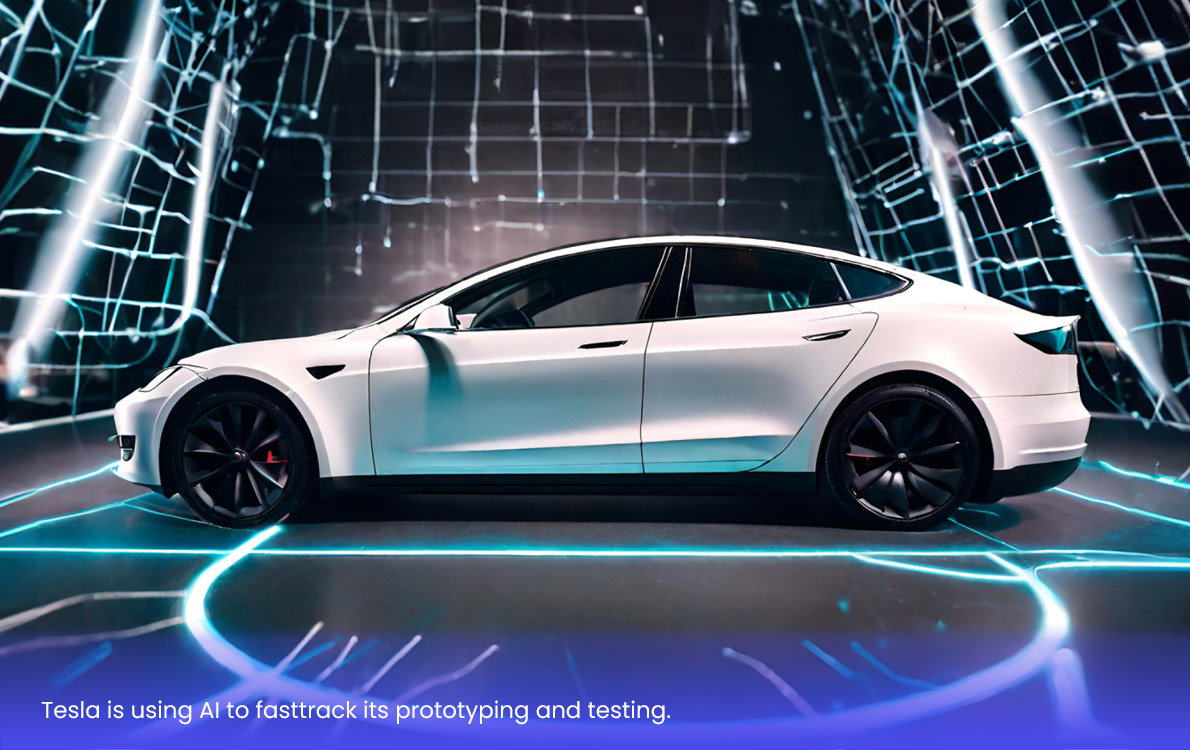

In a rapidly evolving world where technology permeates every aspect of our lives, artificial intelligence (AI) stands out as a beacon of transformative power. AI-driven design is not merely a buzzword; it is revolutionising how we approach innovation and design across various industries. This article delves into the burgeoning landscape of AI-driven design, exploring its impact on innovation, the challenges it presents, and the opportunities it offers for businesses.
AI-driven design combines the analytical prowess of artificial intelligence with the creative instincts of human designers. This synergy allows for the creation of products, services, and experiences that are not only innovative but also tailored to meet the specific needs of consumers. By leveraging AI, designers can analyse vast amounts of data to uncover patterns, predict trends, and generate designs that resonate with target audiences.
AI-driven design is reshaping the retail landscape by personalising the shopping experience at an unprecedented level. Companies like ASOS and Zalando leverage AI to analyse customer data, enabling tailored product recommendations, dynamic pricing, and targeted marketing campaigns. This personalisation extends to website design, where AI algorithms continuously optimise layouts and user interfaces to enhance the customer journey and boost conversion rates.

"AI allows designers to analyse vast amounts of data to uncover patterns, predict trends, and generate designs that resonate with target audiences."
The impact of AI transcends digital realms, transforming physical retail spaces. Retailers utilise AI to analyse in-store data, such as foot traffic patterns and customer interactions, optimising product placements, signage, and store layouts for an immersive shopping experience. AI-powered computer vision and image recognition technologies gather real-time insights into customer behaviour, informing dynamic merchandising strategies and enabling retailers to adapt product displays instantaneously.
Moreover, generative AI tools empower designers to rapidly prototype countless design variations, accelerating the iteration process and enabling agile responses to evolving customer preferences. As AI capabilities advance, its role in shaping personalised, engaging, and seamless omnichannel retail experiences will become increasingly pivotal, solidifying the competitive edge of forward-thinking retailers.

AI-driven design is revolutionising the automotive industry, enabling rapid innovation and transformative capabilities. Tesla, a pioneer in this field, employs AI to design and optimise its electric vehicles, leveraging AI-driven simulations for rapid prototyping and testing. This accelerated design process reduces the time and costs associated with traditional methods, allowing for faster iteration and refinement.
The impact of AI extends beyond vehicle design, playing a crucial role in developing autonomous driving features. AI algorithms analyse vast amounts of data from sensors and cameras, enabling real-time decision-making and enhancing both safety and efficiency on the road. This technology is paving the way for self-driving cars, which could significantly reduce accidents caused by human error and optimise traffic flow, ultimately leading to a more sustainable and efficient transportation system.
"Car manufacturers are using AI-driven simulations for rapid prototyping and testing, which accelerates the overall design process and reduces the time and costs associated with traditional methods."

Moreover, AI is driving advancements in personalised in-vehicle experiences. By analysing driver behaviour and preferences, AI can tailor the vehicle's settings, infotainment systems, and even driving modes to individual users, creating a highly customised and intuitive experience. This level of personalisation not only enhances user satisfaction but also fosters brand loyalty and differentiation in a competitive market.
As AI capabilities continue to evolve, its role in shaping the future of the automotive industry will become increasingly pivotal, driving innovation in design, autonomous driving, and personalised user experiences, while also contributing to sustainability and efficiency goals.

AI-driven design is transforming the healthcare industry, revolutionising patient care and medical research. UK-based startup Babylon Health exemplifies this trend, utilising AI to design user-friendly health apps that provide personalised medical advice and enable remote consultations. This innovative approach not only improves accessibility to healthcare services but also aids in early disease diagnosis and prevention.

"Design thinking has emerged as a crucial approach in driving HealthTech innovations, enabling healthcare professionals to develop solutions that are user-centred, effective, and efficient."
The impact of AI extends beyond patient-facing applications. AI algorithms are analysing vast amounts of medical data, including patient records, imaging scans, and genomic information, to identify patterns and insights that can inform more accurate diagnoses, personalised treatment plans, and the development of new therapies. This data-driven approach is accelerating medical research and enabling precision medicine tailored to individual patients' unique characteristics.
Moreover, AI is driving advancements in medical device design and surgical planning. AI-powered simulations and modelling allow for the optimisation of medical equipment and the virtual testing of surgical procedures, enhancing safety, efficiency, and patient outcomes. This technology is particularly valuable in complex surgeries, enabling surgeons to plan and rehearse intricate procedures, reducing risks and improving overall surgical precision.

The integration of AI into product development and design processes presents significant ethical implications that must be carefully considered and addressed. While AI offers numerous advantages, such as accelerated innovation, enhanced efficiency, and personalised user experiences, it also introduces complex ethical challenges that require robust governance frameworks and a culture of responsible adoption within organisations. Following are some of the key ethical concerns surrounding the use of AI in new product development and design.
Data Privacy and Surveillance
AI systems often rely on vast amounts of user data, raising concerns about ethical data sourcing, storage, and utilisation practices.
There is a potential for invasions of privacy as AI systems become more sophisticated in data collection and analysis, blurring the
line between security and surveillance.
Algorithmic Bias and Discrimination
AI algorithms can inadvertently perpetuate or amplify existing societal biases if not trained on diverse and representative datasets,
leading to discriminatory outcomes. There is a risk of AI systems replicating historical biases, such as redlining in the lending
industry, if not designed and deployed thoughtfully.
Lack of Transparency and Accountability
As AI systems make more decisions that impact our lives, there is a need to establish clear lines of responsibility and accountability
for their actions. There is a lack of transparency in how complex AI algorithms make decisions, making it difficult to scrutinise and
understand their reasoning.
Intellectual Property and Harmful Content Generation
Generative AI tools trained on massive datasets from the internet can inadvertently reproduce copyrighted material or intellectual
property, exposing companies to legal risks. Additionally, AI systems can potentially generate harmful, offensive, or misleading
content, either intentionally or unintentionally, posing reputational risks for companies.
To address these ethical challenges, organisations must foster a culture of responsible AI adoption, establish clear ethical guidelines, promote transparency and accountability, and provide ongoing training and education for design teams. Collaboration between designers, ethicists, and AI experts is crucial to ensure that AI-driven design solutions align with ethical principles and prioritise user well-being.
The rise of AI in product development and design processes has sparked concerns about the potential displacement of human designers. However, it is crucial to recognise that while AI can analyse vast amounts of data and generate designs, the human touch remains indispensable in the creative process. Human designers bring a unique set of qualities that AI cannot replicate, such as intuition, empathy, and emotional intelligence.
The Irreplaceable Human Touch
Design is not merely a technical exercise; it is an art form that requires a deep understanding of human behaviour, emotions, and cultural
nuances. Human designers possess the ability to empathise with end-users, anticipate their needs, and craft experiences that resonate on
an emotional level. This human-centric approach is essential for creating products and services that truly enrich people's lives.
Moreover, human designers bring creativity, imagination, and a sense of artistry to the design process. While AI can generate novel ideas based on its training data, human designers have the capacity to think outside the box, challenge conventions, and push the boundaries of what is possible. This ability to innovate and transcend the limitations of existing data is crucial for driving true breakthroughs in design.
Collaborative Intelligence
The future of design lies not in a competition between humans and AI but rather in a collaborative approach where AI augments and enhances
human creativity. By automating repetitive tasks and providing data-driven insights, AI can free up human designers to focus on the more
nuanced and creative aspects of their work.
This collaborative intelligence approach allows designers to leverage the strengths of both humans and AI, creating a synergistic relationship where AI handles the computational heavy-lifting, while human designers bring their unique perspectives, emotional intelligence, and creative vision to the table.
Fostering Human-AI Collaboration
To fully realise the potential of human-AI collaboration in design, organisations must cultivate a culture that values and nurtures the
unique strengths of both humans and AI. This involves providing designers with the necessary training and resources to effectively
integrate AI into their workflows, while also fostering an environment that encourages creativity, experimentation, and continuous
learning.
By embracing a collaborative approach that leverages the complementary strengths of humans and AI, the design industry can unlock new levels of innovation, create more meaningful and impactful products and services, and ultimately, shape a future where technology and human ingenuity work in harmony.
For businesses, embracing AI-driven design offers a competitive edge. By harnessing the power of AI, companies can streamline their design processes, reduce costs, and bring products to market faster. Moreover, AI-driven insights enable businesses to stay ahead of consumer trends, ensuring that their offerings remain relevant and appealing.
To successfully integrate AI into the design process, businesses must invest in training their teams. This includes both technical training for understanding AI algorithms and creative training for applying AI insights to design.
Encouraging collaboration between AI specialists and designers is crucial. By fostering a culture of collaboration, businesses can ensure that AI is used effectively to enhance design outcomes.
Adopting ethical AI practices is essential for building trust and credibility. Businesses should implement transparent data practices and regularly audit their AI systems to prevent bias.
AI-driven design tools can significantly speed up the prototyping process. By using AI to generate and test multiple design iterations quickly, businesses can refine their products more efficiently.
The rise of AI-driven design marks an exciting new era of innovation, in my opinion. By combining the capabilities of AI with human creativity, businesses can unlock unprecedented opportunities. Based on my conversations with design leaders from around the world, the potential for AI-driven design is immense, given the thriving global tech landscape. As we navigate this frontier, I believe embracing AI as a collaborative partner in the creative process is key to ensuring a future of design that is both innovative and human-centric.
For most businesses, I am actively encouraging exploring the possibilities of AI-driven design. Irrespective of the actual industry vertical, AI offers powerful tools to transform design processes and maintain a competitive edge. Embrace this future and let AI-driven design lead the way. Foster a collaborative relationship between human designers and AI to create products and services that are innovative, meaningful and impactful for customers. It's an exciting time in the design world, and I'm eager to see what we can achieve by harnessing the complementary strengths of humans and AI.
Usman is a digital veteran and a renowned expert in human-centric innovation and product design. As the founder of Pathfinders, Usman works directly with businesses to uncover disruptive opportunities and helps create tangible business value through design and innovation.
Book an initial consultation with Usman »